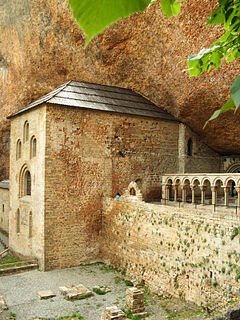 W
WChristianity has a strong tradition of pilgrimages, both to sites relevant to the New Testament narrative and to sites associated with later saints or miracles.
 W
WTravelogues of Palestine are the written descriptions of the region of Palestine by travellers, particularly prior to the 20th century. The works are important sources in the study of the History of Palestine and the History of Israel. Surveys of the geographical literature on Palestine were published by Edward Robinson in 1841, Titus Tobler in 1867 and subsequently by Reinhold Röhricht in 1890. Röhricht catalogued 177 works between 333—1300CE, 19 works in the 14th c., 279 works in the 15th c., 333 works in the 16th c., 390 works in the 17th c. 318 works in the 18th c., and 1,915 works in the 19th c.
 W
WAnton Pelchinger was a Bavarian Benedictine monk, artist and writer. He was born at Hofen, near Bad Aibling. He entered Tegernsee Abbey in 1442. There he served as Kapellmeister, chorister, organist and teacher of music. He also worked as a manuscript illustrator at Tegernsee and at Andechs Abbey. His illustrations are of high quality. In 1458 he went on a pilgrimage to the Holy Land, departing from Venice. He wrote a conventional description of Jerusalem and the Christian holy places. He does not include any personal details, but identifies himself as a professor of Tegernsee. One manuscript of this work is in the Austrian National Library in Vienna and there may be another in the Bavarian State Library in Munich.
 W
WArnold von Harff was a German traveler from the 15th century, from Köln. He went on pilgrimage to many countries, collecting both languages and cultural information. He wrote about several languages during his travels (1496-1499) : Breton, Croatian language, Turkish, Basque language), Hebrew language, Arabic, Albanian language, Hungarian language, Syriac language, Amharic language, and Armenian language.
 W
WWilliam Henry Bartlett was a British artist, best known for his numerous drawings rendered into steel engravings.
 W
WGustav Bauernfeind was a German painter, illustrator and architect of partly Jewish origin. He is considered to be one of the most notable Orientalist painters of Germany.
 W
WGertrude Margaret Lowthian Bell, CBE was an English writer, traveller, political officer, administrator, and archaeologist who explored, mapped, and became highly influential to British imperial policy-making due to her knowledge and contacts, built up through extensive travels in Syria-Palestine, Mesopotamia, Asia Minor, and Arabia. Along with T. E. Lawrence, Bell helped support the Hashemite dynasties in what is today Jordan as well as in Iraq.
 W
WBenjamin of Tudela was a medieval Jewish traveler who visited Europe, Asia, and Africa in the 12th century. His vivid descriptions of western Asia preceded those of Marco Polo by a hundred years. With his broad education and vast knowledge of languages, Benjamin of Tudela is a major figure in medieval geography and Jewish history.
 W
WIsrae͏̈l Joseph Benjamin was a Romanian-Jewish historian and traveler. His pen name was "Benjamin II", in allusion to Benjamin of Tudela.
 W
WBiblical researches in Palestine, Mount Sinai and Arabia Petraea, also Biblical Researches in Palestine and the Adjacent Regions, was a travelogue of 19th-century Palestine and the magnum opus of the "Father of Biblical Geography", Edward Robinson. The work was published simultaneously in England, the United States and Germany.
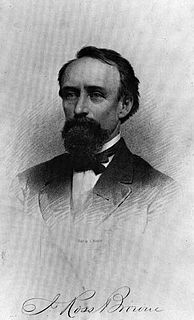 W
WJohn Ross Browne, often called J. Ross Browne, date of birth sometimes given as 1817, was an Irish-born American traveler, artist, writer and government agent.
 W
WJames Silk Buckingham was a Cornish-born British author, journalist and traveller, known for his contributions to Indian journalism. He was a pioneer among the Europeans who fought for a liberal press in India.
 W
WHeinrich Bünting was a Protestant pastor and theologian. He is best known for his book of woodcut maps titled Itinerarium Sacrae Scripturae first published in 1581.
 W
WJohann Ludwig Burckhardt was a Swiss traveller, geographer and orientalist. Burckhardt assumed the moniker Sheikh Ibrahim Ibn Abdallah during his travels in Arabia. He wrote his letters in French and signed Louis. He is best known for rediscovering the ruins of the ancient Nabataean city of Petra in Jordan.
 W
WNompar of Caumont (1391–1446) was a Gascon lord who left written accounts of his pilgrimages to Santiago de Compostela and Jerusalem. His work has also contributed lexicographic inputs to the Dictionary of Middle French.
 W
WFrançois-Léon Clergue - in religious Marie-Antoine de Lavaur - was a French Roman Catholic priest and professed member from the Order of Friars Minor Capuchin. He became a popular priest who attracted large crowds when he would preach; he preached around 700 itinerant missions in southern France which would earn him a nickname as the "Apostle of the South". He is also credited with the development of pilgrimages to the shrine in Lourdes where he often visited to preach and to tend to the visiting pilgrims. He was a traditionalist who railed against secularist influences and remained in France in 1880 when religious orders were expelled to other European nations; he remained in his deserted convent earning him respect from the authorities who refused to expel him due to his popular rapport with the locals.
 W
WEphraim Deinard (1846–1930) was one of the greatest Hebrew "bookmen" of all time. He was a bookseller, bibliographer, publicist, polemicist, historian, memoirist, author, editor, and publisher, all rolled into one.
 W
WEgeria, Etheria or Aetheria was a woman, widely regarded to be the author of a detailed account of a pilgrimage to the Holy Land about 381/2–386. The long letter, dubbed Peregrinatio or Itinerarium Egeriae, is addressed to a circle of women at home. Historical details it contains set the journey in the early 380s, making it the earliest of its kind. It survives in fragmentary form in a later copy—lacking a title, date and attribution.
 W
WDerviş Mehmed Zillî, known as Evliya Çelebi, was an Ottoman explorer who travelled through the territory of the Ottoman Empire and neighboring lands over a period of forty years, recording his commentary in a travelogue called the Seyâhatnâme. The name Çelebi is an honorific title meaning "gentleman" or "man of God".
 W
WFelix Fabri was a Swiss Dominican theologian. He left vivid and detailed descriptions of his pilgrimages to Palestine and also in 1489 authored a book on the history of Swabia, entitled Historia Suevorum.
 W
WLudwig August Ritter von Frankl-Hochwart was a Jewish Bohemian-Austrian writer and poet. He was a friend of Nikolaus Lenau. Also, he corresponded with Petar II Petrovic Njegos of Montenegro before he died in 1851. Frankl's Gusle, Serbische Nationallieder was dedicated to Vuk Karadžić's daughter in 1852. His object was to present some of the songs in Vuk which had not yet been translated, and he took the greatest pains to reproduce in German the metrical effect of the Serbian original.
 W
WConrad Grünenberg, also spelled Konrad, Grünemberg, Grünberg was a patrician from Constance in southern Germany, known as the author of three books, two armorials and a travelogue: the Österreichische Wappenchronik ; the Wappenbuch, containing some 2000 coats-of-arms, which he presented as a gift to Emperor Frederick III; and the illustrated description of his 1486 pilgrimage to Jerusalem.
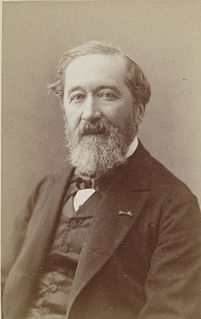 W
WVictor Guérin was a French intellectual, explorer and amateur archaeologist. He published books describing the geography, archeology and history of the areas he explored, which included Greece, Asia Minor, North Africa, Syria and Palestine.
 W
WFrancisco Guerrero was a Spanish Catholic priest and composer of the Renaissance. He was born and died in Seville.
 W
WGunther was a German nobleman and prelate of the Holy Roman Empire. He served as Chancellor of Italy from 1054 until 1057 and as Bishop of Bamberg from 1057 until his death. He was the leader of the Great German Pilgrimage of 1064–65, on which he died.
 W
WIshtori Haparchi (1280-1355), also Estori Haparchi and Ashtori ha-Parhi is the pen name of the 14th-century Jewish physician, geographer, and traveller, Isaac HaKohen Ben Moses.
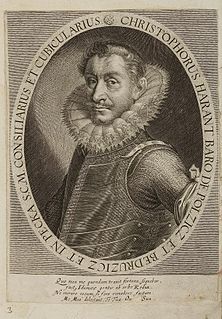 W
WKryštof Harant of Polžice and Bezdružice was a Czech nobleman, traveler, humanist, soldier, writer and composer. He joined the Protestant Bohemian Revolt in the Lands of the Bohemian Crown against the House of Habsburg that led to Thirty Years' War. Following the victory of Catholic forces in the Battle of White Mountain, Harant was executed in the mass Old Town Square execution by the Habsburgs.
 W
WThe Holy Land, Syria, Idumea, Arabia, Egypt, and Nubia was a travelogue of 19th-century Palestine and the magnum opus of Scottish painter David Roberts. It contained 250 lithographs by Louis Haghe of Roberts's watercolor sketches. It was first published by subscription between 1842 and 1849, in two separate publications: The Holy Land, Syria, Idumea and Arabia and Egypt and Nubia. William Brockedon and George Croly wrote much of the text, Croly writing the historical, and Brockedon the descriptive portions.
 W
WAbu Abdullah Muhammad al-Idrisi al-Qurtubi al-Hasani as-Sabti, or simply al-Idrisi, was an Arab Muslim geographer, cartographer and egyptologist who for some time lived in Palermo, Sicily at the court of King Roger II. Muhammed al-Idrisi was born in Ceuta then belonging to the Almoravids. He created the Tabula Rogeriana, one of the most advanced medieval world maps, used by explorers like Christopher Columbus and Vasco Da Gama for their discoveries and voyages.
 W
WJerome, also known as Jerome of Stridon, was a Latin priest, confessor, theologian, and historian; he is commonly known as Saint Jerome.
 W
WJohn of Würzburg was a German priest who made a pilgrimage to the Holy Land in the 1160s and wrote a book describing the Christian holy places, the Descriptio terrae sanctae.
 W
WJourney from Bohemia to the Holy Land, by way of Venice and the Sea is a travel book written by Kryštof Harant, a Czech nobleman and published in 1608. The complete title transliterated into modern Czech is: Cesta z Království Českého do Benátek, odtud do země Svaté, země Judské a dále do Egypta, a potom na horu Oreb, Sinai a Sv. Kateřiny v Pusté Arábii. The book is probably the first published account of the Near East by a Czech traveller.
 W
WAbu Mo’in Hamid ad-Din Nasir ibn Khusraw al-Qubadiani or Nāsir Khusraw Qubādiyānī Balkhi also spelled as Nasir Khusrow and Naser Khosrow was a Persian poet, philosopher, Isma'ili scholar, traveler and one of the greatest writers in Persian literature. He was born in Qabodiyon, a village in Bactria in the ancient Greater Iranian province of Khorasan, now in modern Tajikistan and died in Yamagan, now Afghanistan.
 W
WJános Lászai was a Hungarian Humanist poet and clergyman.
 W
WJohn MacGregor, nicknamed Rob Roy after a renowned relative, was a Scottish explorer, travel writer and philanthropist. He is generally credited with the development of the first sailing canoes and with popularising canoeing as a sport in Europe and the United States. He founded the British Royal Canoe Club (RCC) in 1866 becoming its first Captain and also founded American Canoe Association in 1880.
 W
WAlois Musil was a Moravian theologian, orientalist, explorer and bilingual Czech and German writer.
 W
WThe Palestine Pilgrims' Text Society (PPTS) was a text publication society based in London, which specialised in publishing editions and translations of medieval texts relevant to the history of pilgrimage to the Holy Land. Particular attention was given to accounts by pilgrims and other travellers containing geographical or topographical information, as well as those which discussed the manners and customs of the Holy Land. The original narratives were written in a variety of languages, including Greek, Latin, Arabic, Hebrew, Old French, Russian, and German.
 W
WEdward Henry Palmer, known as E. H. Palmer, was an English orientalist and explorer.
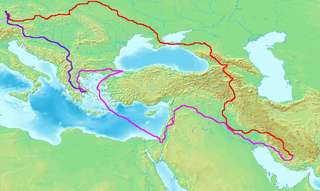 W
WPetachiah of Regensburg, also known as Petachiah ben Yakov, Moses Petachiah, and Petachiah of Ratisbon, was a German rabbi of the twelfth and early thirteenth centuries CE. At some point he left his place of birth, Regensburg in Bavaria, and settled in Prague. He is best known for the description he wrote to document his extensive travels during the late twelfth century throughout Eastern Europe, the Caucasus, and the Middle East. He visited places such as Poland, Russia, Syria, Armenia, and Greece. His work was later published, apparently in an abriged form, in a travelogue that eventually became known under the title Travels of Rabbi Petachia of Ratisbon.
 W
WDavid Roberts was a Scottish painter. He is especially known for The Holy Land, Syria, Idumea, Arabia, Egypt, and Nubia, a prolific series of detailed lithograph prints of Egypt and the Near East that he produced from sketches he made during long tours of the region (1838–40). These and his large oil paintings of similar subjects made him a prominent Orientalist painter. He was elected as a Royal Academician in 1841.
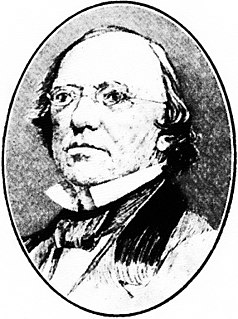 W
WEdward Robinson was an American biblical scholar known for his magnum opus, Biblical Researches in Palestine, the first major work in Biblical Geography and Biblical Archaeology, which earned him the epithets "Father of Biblical Geography" and "Founder of Modern Palestinology."
 W
WUlrich Jasper Seetzen was a German explorer of Arabia and Palestine from Jever, German Frisia. An alternate spelling of his name, Ulrich Iospar Sentzen, is sometimes seen in scientific publications.
 W
WBayard Taylor was an American poet, literary critic, translator, travel author, and diplomat.
 W
WWilliam McClure Thomson was an American Protestant missionary working in Ottoman Syria. After spending 25 years in the area he published a best-selling description of what he had seen in his travels. He used his observations as a means of illustrating and illuminating passages from the Bible.
 W
WHenry Baker Tristram FRS was an English clergyman, Bible scholar, traveller and ornithologist. As a parson-naturalist he was an early supporter of Darwinism, attempting to reconcile evolution and creation.
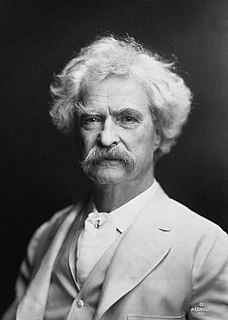 W
WSamuel Langhorne Clemens, known by his pen name Mark Twain, was an American writer, humorist, entrepreneur, publisher, and lecturer. He was lauded as the "greatest humorist the United States has produced," and William Faulkner called him "the father of American literature". His novels include The Adventures of Tom Sawyer (1876) and its sequel, the Adventures of Huckleberry Finn (1884), the latter often called "The Great American Novel".
 W
WBishop Porphyrius, was a Russian Empire traveller, theologian, orientalist, archaeologist and byzantinologist, founder of the Russian Ecclesiastical Mission in Jerusalem and also discovered several ancient codices. In latter year he was auxiliary bishop of Chigirin.
 W
WSaint Willibald was an 8th-century bishop of Eichstätt in Bavaria.